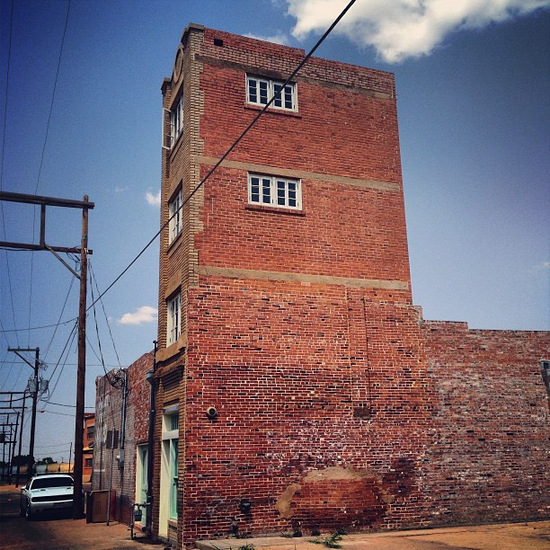
The proposed skyscraper depicted in the blueprints that he distributed (and which were approved by the investors) was clearly labeled as consisting of four floors and 480 inches (12 m).

Investors didn't seem to notice, and McMahon never verbally stated that the actual height of the building would be 480 feet (150 m). The key to McMahon's swindle, and his successful defense in the ensuing lawsuit was that legal documents listed the height as 480" as opposed to 480'. McMahon collected US$200,000 (equivalent to $2,927,876.16 in 2020) in investment capital from this group of naïve investors, promising to construct a high-rise office building across the street from the St. McMahon, a petroleum landman and structural engineer from Philadelphia, was one of seven tenants whose offices were based in the original Newby Building.Īccording to local legend, when McMahon announced in 1919 that he would build a high-rise annex to the Newby Building as a solution to the newly wealthy city's urgent need for office space, investors were eager to invest in the project.

The Newby–McMahon Building is a four-story brick building located near the railroad depot in downtown Wichita Falls, built in 1906 by Augustus Newby (1855–1909), a director of the Wichita Falls and Oklahoma City Railway Company. Because office space was lacking, major stock transactions and mineral rights deals were conducted on street corners and in tents that served as makeshift headquarters for the new oil companies. Though it initially lacked the necessary infrastructure for this sudden increase in economic and industrial activity, Wichita Falls was a natural choice to serve as the local logistical hub, being the seat of Wichita County. As people streamed into the local communities in search of high-paying jobs, the nearby city of Wichita Falls began to grow in importance.

By 1918, an estimated 20,000 new settlers had taken up residence around the lucrative oil field, and many Wichita County residents became wealthy virtually overnight. Burkburnett and its surrounding communities became boomtowns, experiencing explosive growth of their populations and economies. Early occupancy and subsequent abandonmentĪ large petroleum reservoir was discovered just west of the city of Burkburnett, a small town in Wichita County, Texas in 1912.The Newby–McMahon Building is now part of the Depot Square Historic District of Wichita Falls, a Texas Historic Landmark. During the 1920s, the Newby–McMahon Building was featured in Robert Ripley's Ripley's Believe It or Not! syndicated column as "the world's littlest skyscraper," a nickname that has stuck with it ever since. Reportedly the result of a fraudulent investment scheme by a confidence man, the Newby–McMahon Building was a source of great embarrassment to the city and its residents after its completion in 1919. Steep, narrow, internal stairways leading to the upper floors occupy roughly 25 percent of the interior area. Its interior dimensions are approximately 12 ft (3.7 m) by 9 ft (2.7 m), or approximately 108 sq ft (10.0 m 2). It stands 40 ft (12 m) tall, and its exterior dimensions are 18 ft (5.5 m) deep and 10 ft (3.0 m) wide. It is a late Neoclassical style red brick and cast stone structure. The Newby–McMahon Building, commonly referred to as the world's littlest skyscraper, is located at 701 La Salle (on the corner of Seventh and La Salle streets) in downtown Wichita Falls, Texas.

Depot Square Historic District (ID03001552)


 0 kommentar(er)
0 kommentar(er)
